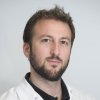THE BARNACLÍNIC+ MOVEMENT DISORDERS UNIT
The primary aim of the barnaclínic+ Movement Disorders Unit is to assess, diagnose and treat people with all kinds of movement disorder, such as Parkinson's disease, Dystonia and Tremor, as well as other less common conditions.
It is made up of a multidisciplinary team of specialists with proven experience. including geneticists, pharmacologists, psychologists, psychiatrists, radiologists, nuclear medicine specialists, neurophysiologists, physiotherapists, rehabilitation specialists, neurologists and neurosurgeons. We have a specialist nursing team whose primary mission is the coordination, follow-up and care of the patient during their assessment and possible treatment. This close cooperation between all members of the team allows us to provide medical care which is state of the art, but above all, human.
The group is also a centre of renowned international expertise and excellence, offering advanced therapy for the treatment of Movement Disorders. Ranging from minor procedures, including the injection of drugs such as botulinum toxin or apomorphine therapy, as well as the implantation of drug infusion pumps; to highly specialised surgical procedures for Movement Disorders (including deep brain stimulation -DBS or high-intensity focused ultrasound -HIFU), particularly surgery for Parkinson's disease, dystonia and essential tremor.
We have more than 25 years of experience in movement disorder surgery and we can offer the most innovative stimulation therapies through directional and rechargeable systems, as well as "intelligent" stimulation. We also have extensive experience in the treatment of Parkinson's Disease and Tremor with the new high-intensity focused ultrasound (HIFU) therapy.
Our medical team is one of the most scientifically productive within Spain and it enjoys a well-established international reputation. The sole objective of our professionals' research is the dissemination of knowledge to improve the quality of life of patients suffering from Movement Disorders.
THE MOVEMENT DISORDERS WE TREAT
The barnaclínic+ Movement Disorders Unit boasts specialists from different areas and the most specific, modern and accurate diagnostic methods.

Tremor
Tremor is a type of Movement Disorder that is characterised by involuntary, rhythmic movements of certain parts of the body, such as the hands and the head, among others.

Dystonia
Dystonia consists of prolonged, involuntary muscle contractions, known as spasms, with repetitive twisting movements. Dystonia can affect the whole body (generalised) or just part of it (localised).
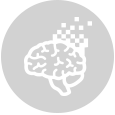
Parkinson's disease
Parkinson's disease is a slowly-progressive neurodegenerative disorder that is typically characterised by tremor, muscle stiffness, slowness of movement (bradykinesia) or lack of balance. Other symptoms unrelated to movement may be manifest.

Parkinsonism
Parkinsonism refers to a group of non-Parkinson's Movement Disorders that give rise to symptoms seen in Parkinson's Disease.

Ataxia
Ataxia is a condition that affects a part of the brain, called the cerebellum, which controls coordinated movement. It consists of a lack of coordination or clumsiness in balance, speech or limb movements, as well as a series of other related symptoms.

Myoclonus
Myoclonus is characterised by exaggeratedly rapid and jerky movements of a muscle or group of muscles.

Restless legs syndrome
Restless legs syndrome produces an abnormal and unpleasant sensation in the legs when they are relaxed or when lying down, which is typically relieved by movement.

Dyskinesia
Dyskinesia refers to repetitive and involuntary movements, such as grimacing, blinking and movements of the limbs, caused by the prolonged use of certain medications that are used to treat psychiatric (neuroleptic) disorders or Parkinson's, among others.

Gilles de la Tourette syndrome
Gilles de la Tourette Syndrome is an early-onset neurological disorder associated with repetitive movements (motor tics) and vocal sounds (vocal tics).

Chorea
Patients with chorea suffer from involuntary, repetitive, brief, irregular and rapid movements of the face, mouth, trunk, and extremities. They start in one part of the body and move to another in a sudden, unexpected and often continuous manner.

Athetosis
Athetosis is a Movement Disorder characterised by a continuous flow of slow, smooth and writhing involuntary movements. It generally affects the hands and feet.

Hemiballismus
Hemiballismus is a type of chorea that involves violent involuntary spastic movements of an arm and/or leg. The movements are more extensive and intense than for Chorea.

Huntington's disease
Huntington's disease is a progressive, hereditary, neurodegenerative disease that causes the breakdown of certain nerve cells in the brain and whose main symptoms are involuntary movements (Chorea), cognitive impairment and psychiatric disorders.
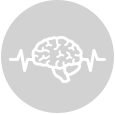
Multiple system atrophy (MSA)
Multiple system atrophy or MSA is a rare, progressive, pleomorphic neurological disorder that affects multiple brain centres. It is characterised by an Ataxia- or Parkinsonism-type Movement Disorder, with other symptoms of the autonomic nervous system, such as blood pressure, cardiac function or bladder function, among others.

Progressive supranuclear palsy (PSP)
Progressive supranuclear palsy, or PSP, is a rare neurological disorder that causes gait, balance and eye movement disorders.

Wilson's disease
Wilson's Disease is a rare, inherited Movement Disorder that causes excess amounts of copper to build up in the body, leading to neurological problems.
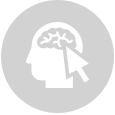
Functional movement disorder
This condition can be similar to any of the Movement Disorders but it is not caused by neurological disease.
Do you wish to make an appointment with our professionals at the barnaclínic+ Movement Disorders Unit or would you like a second opinion?
Click the button below and complete the form. Once you have submitted your request, we will contact you and make every effort to respect your preferences.
WHY CHOOSE THE BARNACLÍNIC+ MOVEMENT DISORDERS UNIT?

MEDICINE THAT IS PERSONALISED, PROFESSIONAL AND HUMAN
The barnaclínic+ Movement Disorders Unit is led by specialists of recognised international prestige and has proven experience spanning more than 25 years in the diagnosis and treatment of Movement Disorders.

MEDICINE THAT IS RAPID, SAFE AND PATIENT-CENTRED
A coordinated multidisciplinary team that offers an ultra-fast Diagnosis, Evaluation and Treatment (DET) Service, through short hospital stays, without compromising on thoroughness. We also offer a coordinated and personalised DET outpatient service, which shortens the tedious waiting times that are common in the management of this condition at other centres. We have one of the most advanced Intensive Care Units for neurological patients in the world. The Hospital Clínic de Barcelona's reputation is our guarantee of ensuring patient safety in the most complex cases.

STATE-OF-THE-ART MEDICINE
We have the best state-of-the-art technology for the diagnosis and treatment of Movement Disorders.

THE BEST SURGERY, THE ONLY ONE OF ITS KIND IN THE WORLD
· No withdrawal of usual medication: which makes it more convenient for the patient and helps to soften the patient's experience during the admission process.
· No hair shaving: which ensures complete functional and social recovery for the patient from the outset.
· Surgery under general anaesthesia: more comfortable for the patient and offers a more pleasant overall experience.
· Intra-operative checks: intra-operative CT allows us to verify the correct placement of electrodes, so we can operate on the patient under general anaesthesia, avoiding the discomfort caused by conscious surgery.
· Short surgery time: the experience and knowledge of our professionals, along with the use of the latest and best technology, allows us to perform surgery in less time than standard procedures. In addition, the system is condensed into one single procedure, which significantly reduces the rate of complications associated with this type of surgery.
Quick, smooth and pleasant postoperative recovery: which we call short-stay therapy. Guaranteed maximum hospital admission of 3 days.

HOSPITALISATION SERVICES
Our Hospital Ward boasts professional and experienced nursing staff and impeccable Hospitality services; attention to even the smallest of details: we guarantee the principles of autonomy and patients' rights to privacy and confidentiality.

GUARANTEE OF EXCELLENCE AND QUALITY
Endorsed by a centre of Excellence, the Hospital Clínic de Barcelona. Voted Spain's second-best Hospital, and one of the best in Europe for more than 5 years running. The centre with the greatest scientific impact in Spain and one of the top choices for physicians to carry out their training. It is an inclusive centre, which receives specialists from all 5 continents to import and export knowledge, and it has more visiting physicians than any other centre in Spain.
MATERIAL RESOURCES AND TECHNOLOGY
As we have already mentioned, the barnaclínic+ Movement Disorders Unit uses the latest state-of-the-art technology for the diagnosis and treatment of Movement Disorders. The innovative tradition of the Hospital Clínic Group, coupled with the experience of our professionals and their scientific activity, means that we can offer the latest therapies and procedures, as well as continuous training in the use and improvement of technology.
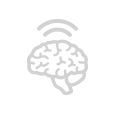
NEURORADIOLOGY
State-of-the-art diagnostic imaging department: high-quality diagnostic image, PET with Fluorodopa and with FDG, high-field 3-Tesla MRI, which incorporates the most innovative techniques in the field of neuroimaging.

NEUROLOGY AND NEUROPSYCHOLOGY
· Ultrasound
· Second-opinion service.
· Short-Stay Unit for rapid diagnosis and treatment adjustments
· Adjustment service for deep brain stimulation parameters.
· Advice on "Choice of Treatment - What, When and How"
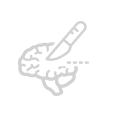
NEUROSURGERY
The Neurosurgery team works in two highly specialised operating theatres, one of which is among the most modern in the world. They have been fitted out with several high-tech devices:
Intra-operative Magnetic Resonance Imaging (MRI): helps to improve the resection of brain tumours, pituitary tumours and cavernoma during surgery. Thanks to this technology, the surgeon can ascertain the amount of tumour tissue removed, while it also increases the safety of the surgical procedure.
· Intra-operative O-Arm CT: an CT that provides real-time intra-operative images of the patient's anatomy, in both two and three dimensions. It helps guide the placement of deep electrodes in Epilepsy and Parkinson's Surgery and is also used in Spinal and Vascular Surgery.
· Neuronavigation: this is used to plan surgery in advance and transfer this plan to the operating theatre. It also creates three-dimensional images of the brain during surgery and makes it possible to locate the lesion or area being operated on at all times.
· Robotic visualisation platform (Kinevo): through robotic movements, this improves image quality and precision in microscopic surgery. It also has a built-in Exoscope (Kivo).
· Intra-operative Oncological and Vascular Fluorescence: facilitates the safer and more effective resection of brain tumours by the fluorescence of the tumour tissue, viewed through the surgical microscope under ultraviolet light. Vascular fluorescence also allows the permeability of cerebral blood vessels to be evaluated when operating on cerebral vascular diseases.
· High-intensity focused ultrasound (HIFU): we offer the most advanced model of high intensity ultrasound for the treatment of patients with tremor, rigidity or cardinal symptoms caused by Parkinson's disease. This model of treatment is incision-free, painless, has been proven to be effective and is practically an outpatient treatment.
DIAGNOSIS OF MOVEMENT DISORDERS
The barnaclínic+ Movement Disorders Unit consists of specialists with a multidisciplinary approach who use the latest, most personalised, modern and accurate diagnostic methods. We have an outpatient diagnostic department and a Short-Stay Unit that strive to provide diagnostic services as simply, effectively and comfortably as possible for the patient. In short, personalised medicine tailored to each individual case.
TREATMENT OF MOVEMENT DISORDERS
The treatment of Movement Disorders varies depending on the disorder itself. The best option is to treat the underlying disease.
Neuropsychological and psychiatric treatment of Movement Disorders
The team of psychologists and psychiatrists will assess the patient as part of the comprehensive study of Movement Disorders. Patients may manifest a psychological problem associated with their Movement Disorder, which should also be treated if the aim is to optimise the overall treatment outcome.
Medical treatment of Movement Disorders
Some Movement Disorders can be treated pharmacologically. However, there is often no cure, in which case the goal of medical treatment is to improve symptoms and relieve pain. Our team of neurologists will study each case and choose the best therapeutic option, either to treat the disease or to control its symptoms.
Movement Disorder surgery
In some cases, medication cannot cure or alleviate the disease, causes undesirable side effects or intolerances, or the symptoms are highly debilitating despite adequate medication. This type of patient shall require surgery to treat the Movement Disorder. There are different surgical options for the treatment of Movement Disorders. Our leading neurosurgery team are experts in all types of surgery and they will recommend the most suitable option for each specific case.
· Deep Brain Stimulation
Deep brain stimulation (DBS) aims to regulate areas of the brain that are not working properly in order to control the symptoms of the disease. This is achieved by implanting an electrical device that modulates specific targets in the brain, resulting in symptomatic improvement in a particular neurological disease, most commonly a Movement Disorder. Its great advantages over the lesional procedures used in the past are its reversibility, adjustability and the fact that it can be used bilaterally with a good safety profile. Its main indications are essential tremor, Parkinson's disease and Dystonia, once medical treatment becomes ineffective, intolerable due to side effects or causes motor complications.
· High-intensity Focused Ultrasound - HIFU
This is an innovative system for the treatment of functional disorders of the central nervous system. Through an ultrasound technique, and with the high-field magnetic resonance imaging (3T) available at our centre, we apply an ultrasound treatment to a target of barely a few millimetres that generates a localised increase in heat and ultimately damages the target area. HIFU's principal advantages is that it is a therapeutic procedure that requires no intracranial surgery, it is performed by ultrasound blasts from outside the skin, guided by MRI, and with no incisions or cuts on the skin. During the treatment, it can be observed if the target and the effect are adequate, whilst at the same time making corrections to improve effectiveness and reduce adverse effects before there is any focal tissue damage. As no cranial opening is required, its cost is lower, admission is overnight and it is indicated for very elderly patients or for diseases for which conventional surgery is contraindicated.
OUR ACTIVITY
· 52 DBS surgeries/year with 0.1% complications rate in general
· 20 HIFU treatments/year with 3% complications rate
· 1% of readmissions for all causes.
· 0.05% of readmissions due to complications
· The only centre to perform surgery without shaving the scalp
· The only centre to perform surgery on patients with Parkinson's disease or dystonia under general anaesthesia
· The only centre to confirm correct electrode placement by intra-operative neuroimaging with intra-operative CT
· Use of latest-generation directional electrodes and rechargeable pacemakers, compatible with MRI
· First in Spain to use the new generator with brain wave recorder for the self-adjustment of stimulation therapy designed by Medtronic®
· First to perform HIFU treatments in Spain, having treated more than 100 patients since 2015
· CSUR National Referral Centre - Accreditation in paediatric and adult Movement Disorders Surgery. It is also part of the European Reference Network on Rare Neurological Diseases (ERN-RND).
· Pioneers in the application of highly specialised treatments, such as surgical treatment with deep brain stimulation, the infusion of dopaminergic drugs in continuous subcutaneous and intraduodenal infusion, and treatment with botulinum toxin.
Do you need advice or guidance on Movement Disorders but are not in Spain or are unable to travel
Request an online visit with our professionals. They will speak to you by videoconference, without your having to leave your home and at a time that suits you. Click on the button below and fill out the form. We will get back to you as soon as possible
Blog
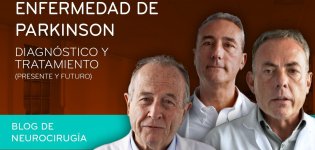
Presente y futuro del diagnóstico y tratamiento de la Enfermedad de Parkinson
Los doctores Eduard Tolosa, Francesc Valldeoriola y Jordi Rumià forman parte de la Unidad de Parkinson y Trastornos del Movimiento (UPTM) del Hospital Clínic de Barcelona y barnaclínic+. Esta unidad, liderada por el Instituto Clínic de Neurociencias (ICN), es pionera en la aplicación de terapias de alta complejidad, como la estimulación cerebral profunda, los ultrasonidos u […] La entrada Presente y futuro del diagnóstico y tratamiento de la Enfermedad de Parkinson aparece primero en Blog de Neurocirugía.

¿En qué consiste la Neurocirugía Mínimamente Invasiva?
La Neurocirugía Mínimamente Invasiva son una serie de técnicas quirúrgicas que permiten acceder al cerebro, a la base de cráneo, a la columna,… con la mínima afectación del paciente. La cirugía mínimamente invasiva en neurocirugía, nació con el objetivo de intervenir tumores cerebrales complejos con la mínima agresividad e invasividad sobre el paciente. TE PUEDE […] La entrada ¿En qué consiste la Neurocirugía Mínimamente Invasiva? aparece primero en Blog de Neurocirugía.
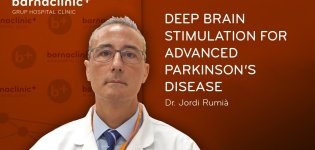
Estimulación cerebral profunda, la mejor opción para la Enfermedad de Parkinson Avanzada
El programa de Neurocirugía Funcional del Hospital Clínic de Barcelona tiene más de 20 años y por él han pasado más de 1.000 pacientes con epilepsia, Enfermedad de Parkinson y otros trastornos del movimiento. Desde sus inicios, se ha utilizado e investigado la eficacia de la Estimulación Cerebral Profunda para el tratamiento de la Enfermedad de […] La entrada Estimulación cerebral profunda, la mejor opción para la Enfermedad de Parkinson Avanzada aparece primero en Blog de Neurocirugía.




